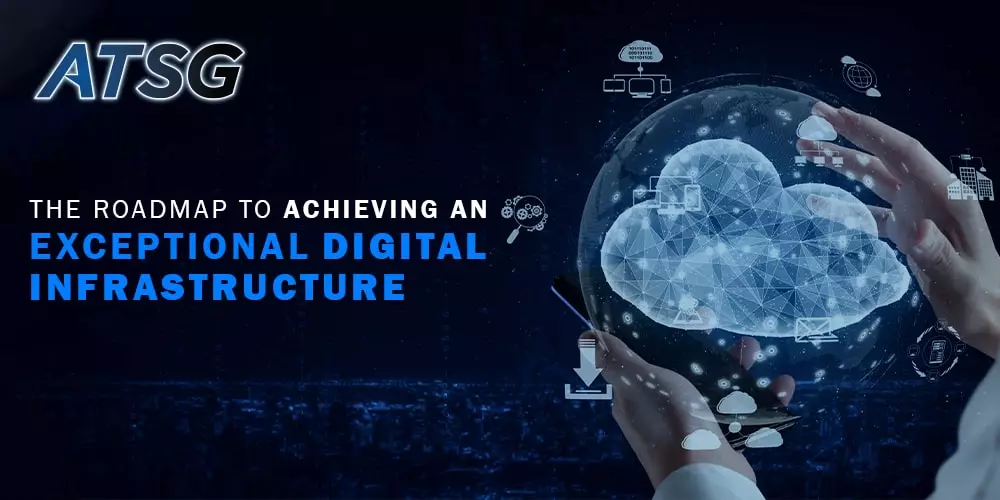Whether it’s a small startup or a successful multi-million-dollar business, every enterprise wants to benefit from digital transformation (DX) initiatives. For businesses of all shapes and sizes, the ultimate goal of digital transformation is always quite similar.
It involves leveraging innovative tech solutions to slash operational wastage and cost while streamlining overall operational efficiencies. In a nutshell, businesses are looking for ways to have a robust digital infrastructure, to unlock a better future for themselves.

What is Lean Digital?
Traditionally, lean manufacturing or just-in-time (JIT) manufacturing involved decreasing the extra production time, as well as the time required to transition from raw materials supplier, right down to customers.
Today, when enterprises integrate digital transformation solutions along with lean manufacturing objectives, we get lean digital. In the following points, we have mentioned some advantages of adopting lean digital approaches for businesses:-
- The lean digital approach involves drastically transforming modern automation.
- This approach also helps businesses adjust to the challenges of skilled-labor shortage.
- With the help of this approach, businesses work on ways to achieve wastage reduction and sort out overproduction issues in their operations.
- Lean digital also handles resource misallocation issues, and decreases excessive lead times, thus improving overall efficiency.
- It also works towards decreasing defective end products and building huge stockpiles of inventory.
- Today, many businesses are also using lean digital Kanban approaches in which they leverage Machine Learning (ML) algorithms to monitor raw-material bins. These bins automatically detect refill levels.
- Numerous enterprises also leverage a digitally lean approach to check their equipment’s health. They leverage ML software, as well as smart temperature and vibration sensors to detect if any of their machinery is defective, and needs to be repaired.
- The lean digital “Heijunka” approach is also being used to make sure that new machines and resources are available on time. This is achieved by utilizing previously run data to accurately predict resource failover.
Digital Transformation (DX) Initiatives via Software
Behind all successful lean digital and DX efforts, there are various innovative software and tech solutions that support automation. With the help of such software, businesses get integrated development environments (IDE) to smartly connect digital infrastructure with machines. The best part about IDE is that it drastically reduces any downtime related to enterprise operations and processing.
It is noteworthy to remember here that presently, customization and personalization in product development tend to increase customer loyalty towards the brand. For this, businesses use lean digital concepts for more frequent and efficient changeovers.
To streamline their manufacturing processes, more and more businesses are adopting IDEs for more scalable and modular automation processes. In addition, integrated development environments (IDEs) also facilitate the automation of equipment that is relatively new, or more complicated.
To make things easier, we have Cloud Computing powered smart factories that leverage suppliers’ software for efficient program changeovers. By using such software, employees can even carry out important updates from any remote location.
Digital Lean Supported by Consumer-Grade Computing
Undoubtedly, today’s astonishing digital revolution has really transformed manufacturing processes to a great extent. Innovative minicomputer technologies, such as Raspberry Pi, along with smartphones have been game changers for businesses.
Even though the advancement in hardware has been remarkable, the cost-efficient computing power of software solutions is of dominant value in today’s consumer products. With the help of digital lean platforms, key IT experts can scale their operations by leveraging software to make their processes more efficient.
Conclusion
Today, every other business is well on its way to jumping on the “digital transformation bandwagon”. However, businesses need to figure out their unique selling points (USPs) that give them a competitive advantage.
For this purpose, they should approach digitalization initiatives in a smart, agile, structured, and timely fashion. This way, enterprises can streamline their customer solutions and improve operational efficiencies, while maintaining an exemplary Digital Employee Experience (DEX).
For effective, highly secure, and fully operationalized digital workplaces, get in touch with ATSG. Here, you will get IT operations support, along with enterprise service desk solutions.
Managed IT solutions and intelligent technology services offered by ATSG will help you plan, execute and manage your digital infrastructure, in an effective and seamless manner.
Not just that, ATSG’s Unified Communications (UC) Services can be perfect for both hybrid and fully remote employees. As for your customers, ATSG’s on-prem and Cloud-based Contact Center Services will enable your enterprise to deliver top-notch customer experiences (CX).
The best part is, ATSG has a team of certified professionals that fully leverage the requisite tools to analyze your IT environment. With the help of its fully managed detection and response (MDR), and Endpoint Detection & Response (EDR) capabilities, your enterprise can have a strong and resilient cybersecurity posture.
With ATSG, you achieve all this without compromising on organizational productivity.




